South China Morning Post: a Hong Kong story
The South China Morning Post was first published on November 6, 1903, when Hong Kong was a British colony. In its 118 years, the newspaper has told tens of thousands of stories, some small, others historic. In 2021, the Post is an international media company focused on the global China story. Here’s a look back through the years.
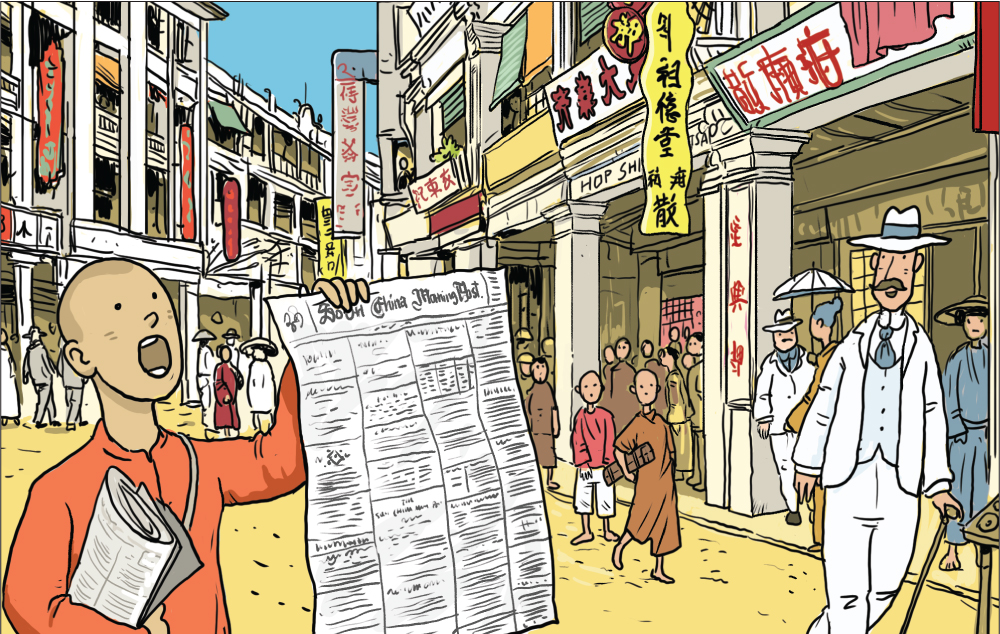
It is 1903 and two enterprising friends want to
set up a new English-language newspaper. Their mission is to be
the voice of China’s growing idealism and progress.
South China Morning Post launches on
November 6, even as the British colony is already
served by three other established English papers
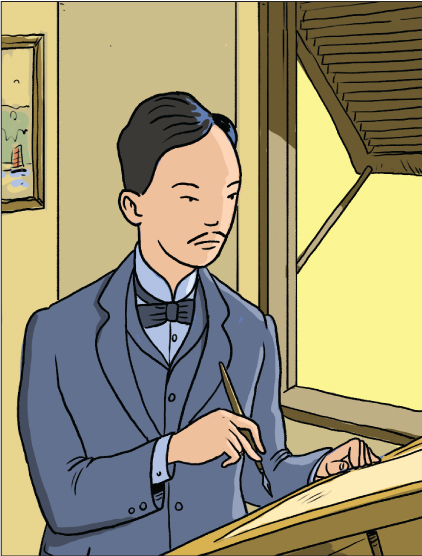
One of the founders is a Chinese patriot,
Tse Tsan-tai, who is determined to help bring
down the Manchu emperor’s tottering Qing dynasty

The other is Alfred Cunningham, a veteran British
journalist of local publications, who starts editing the
Post

The pair press hard for reforms, not only in the crumbling empire
of the dragon throne, but also in the entrepôt city on its
southern flank, Hong Kong

… as in 1904, when the paper attacks the Hong
Kong authorities over the colony’s poor sanitary conditions
In 1906, a major typhoon strikes Hong Kong,
leaving some 11,000 people dead. The storm causes widespread
damage, including to the Post’s premises in Central, and
sinks or grounds more than a thousand junks and 41 ocean-going
ships
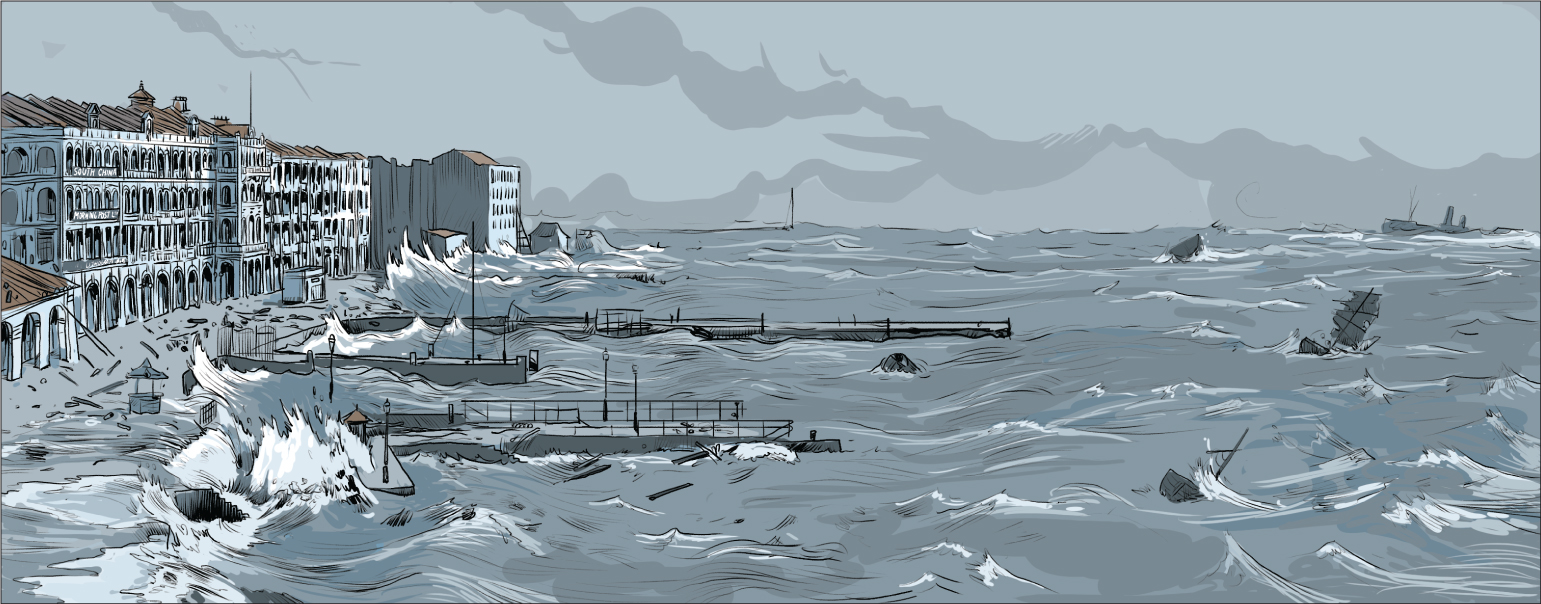
In one of the paper’s first major campaigns, the
Post demands a full inquiry over the Royal Observatory’s
failure to alert the public to the advancing typhoon

Henry Ching joins the Post as a reporter.
Eight years later he becomes editor, a position he holds for 33
years
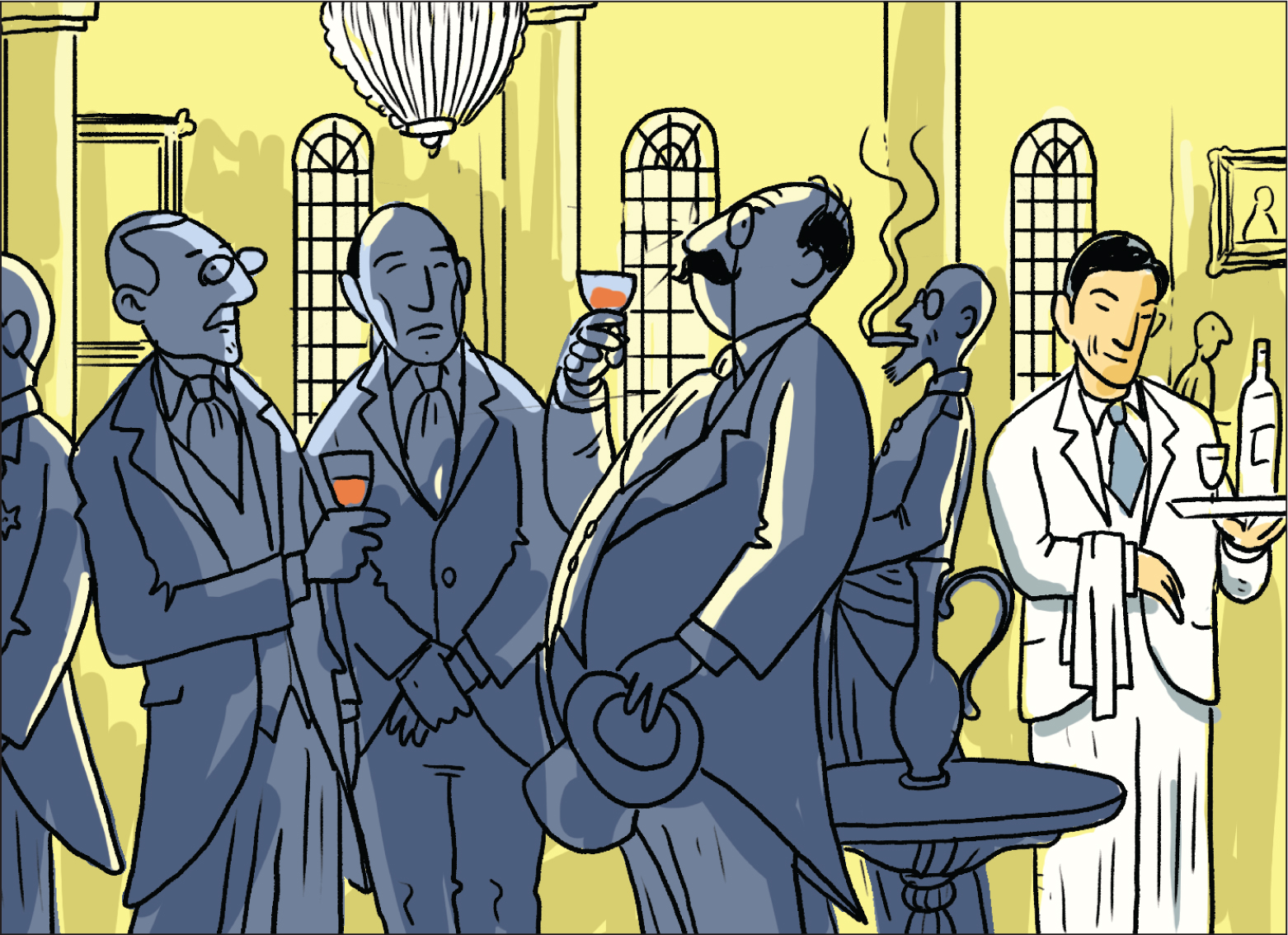
Some influential figures in Hong Kong society show little
enthusiasm for Ching because of his Eurasian ethnicity. On one
occasion, the resourceful young journalist is barred from entering
the Hong Kong Club so he sneaks in through the back door and
pretends to be one of the staff to report on a business meeting
being held there.
The city experiences tremendous changes and more than its share of
horrors …
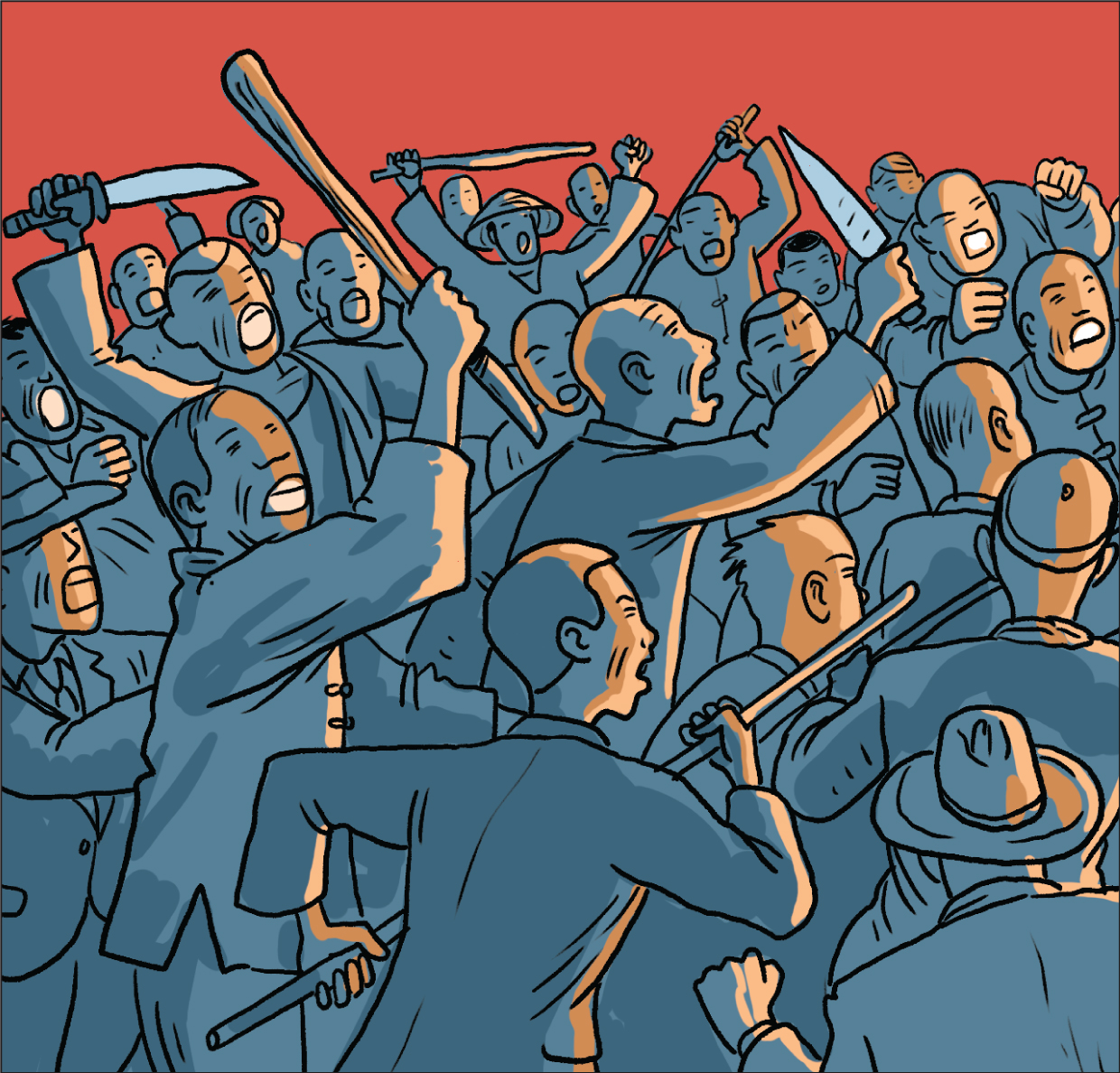
… such as during the autumn of 1931, when a mob
breaks into a house in Kowloon City, hacking a Japanese family to
death. It is the worst incident in the anti-Japanese rioting that
paralysed the city for two weeks

The Post’s first female reporter, Helen Duncan, joins in
1932. One of the 18-year-old's first assignments
is to attend the magistrate's court to report on a rape case
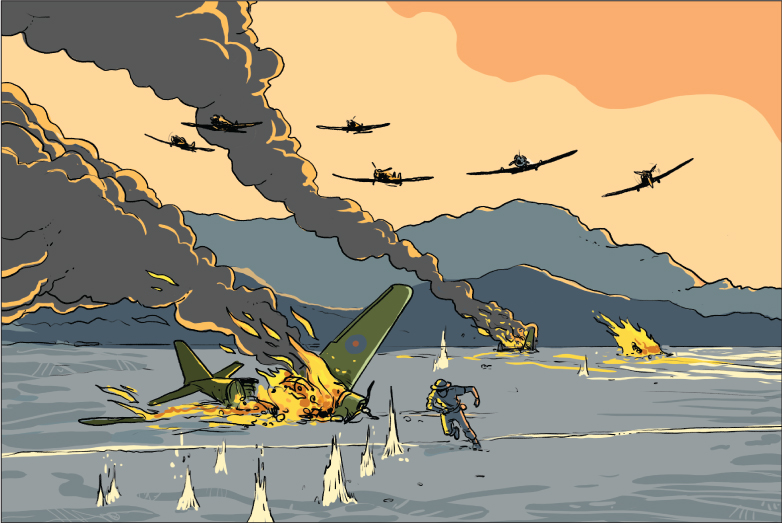
At dawn on December 8, 1941, Japanese
dive-bombers hit Kai Tak, hours after the Pearl Harbour attack in
Hawaii. The war comes to the “Fragrant Harbour” and fighting
ensues

On December 18, Japanese troops land on Hong Kong
island. Post reporter Reg Goldman, serving with the Hong
Kong Volunteers, dies in the fighting. On
December 25, the city surrenders

The Post’s Western staff are sent to internment camps like
the one at Stanley
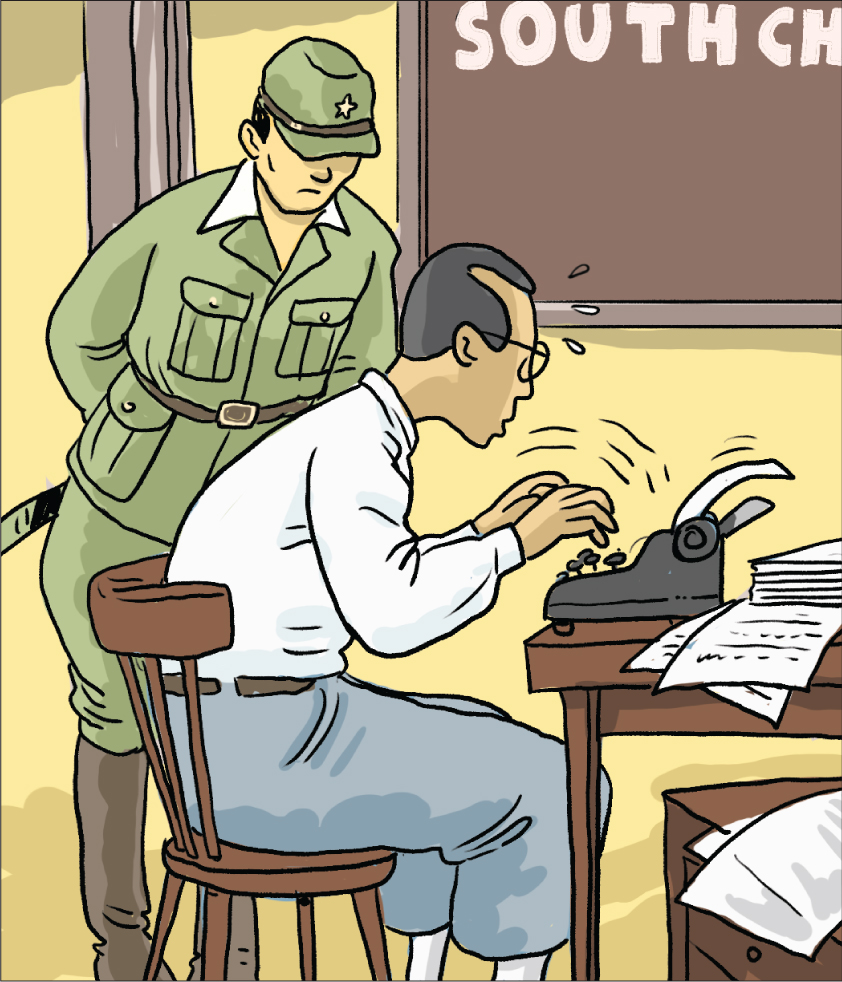
The Japanese occupy the Post’s offices, forcing its
remaining staff to launch the pro-Japanese newspaper,
The Hong Kong News
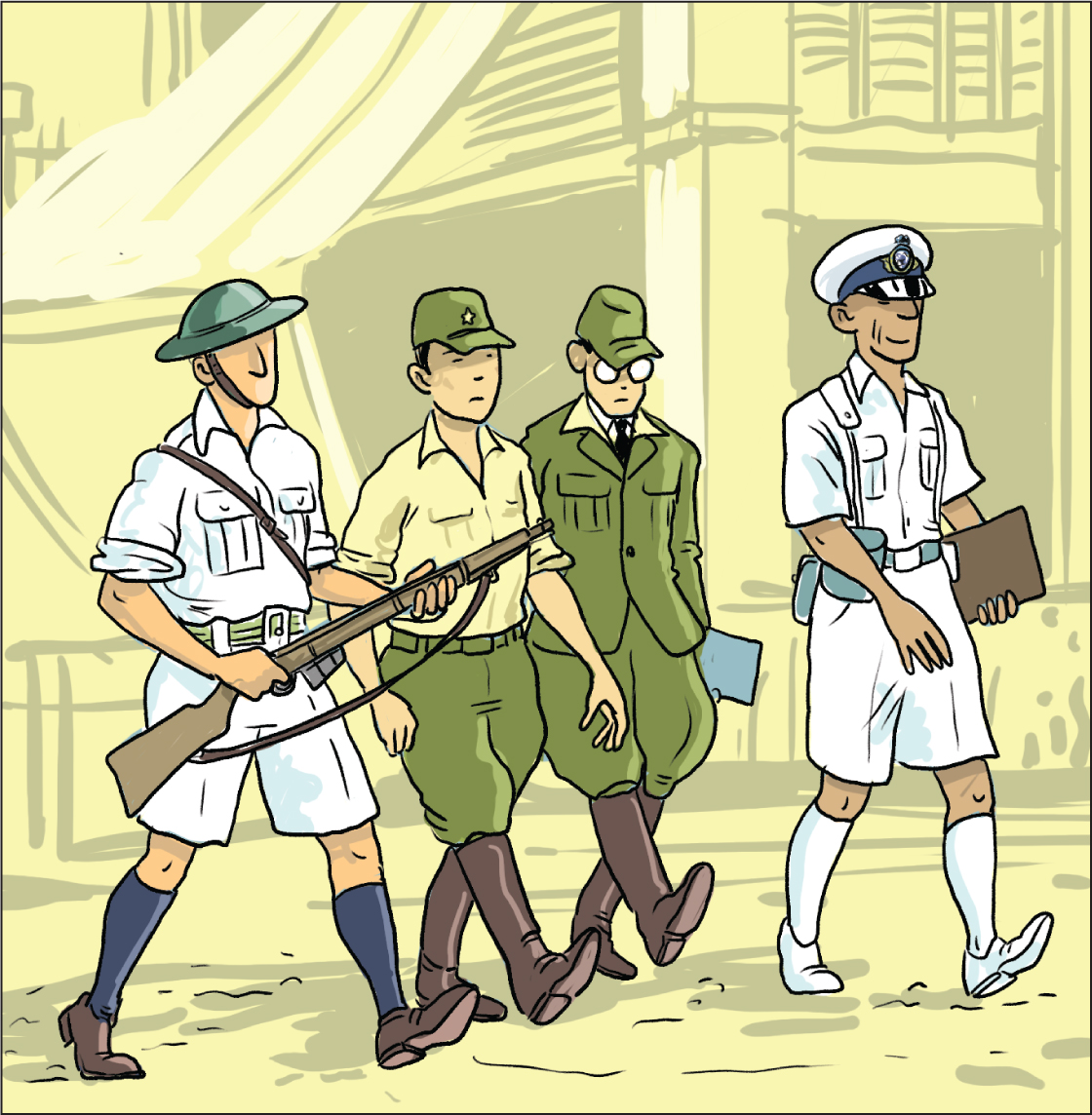
After three and a half years of Japanese occupation, Allied troops
take back the British colony. Henry Ching breaks the news as the
Post rushes back into circulation

As Hong Kong and the Post pick up quickly after the war,
thousands of refugees flood across the border to flee the civil
war in mainland China

Many of them settle in illegal shanties in Shek Kip Mei. On
December 25, 1953, a raging fire destroys the
settlement and some 53,000 people are left homeless. This tragedy
spurs the governor into establishing a Housing Authority to
provide 600,000 public homes
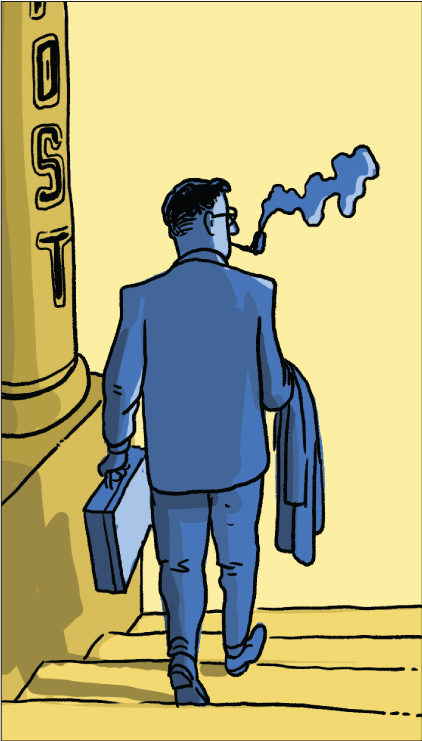
In 1957, Henry Ching retires from his long
editorship. S.A. Gray moves from the China Mail to take
over as editor of the Post
Post reporter Tommy Lewis often
accompanies police on anti-triad raids. On one occasion in
1965, he helps detain and handcuff a drug
dealer
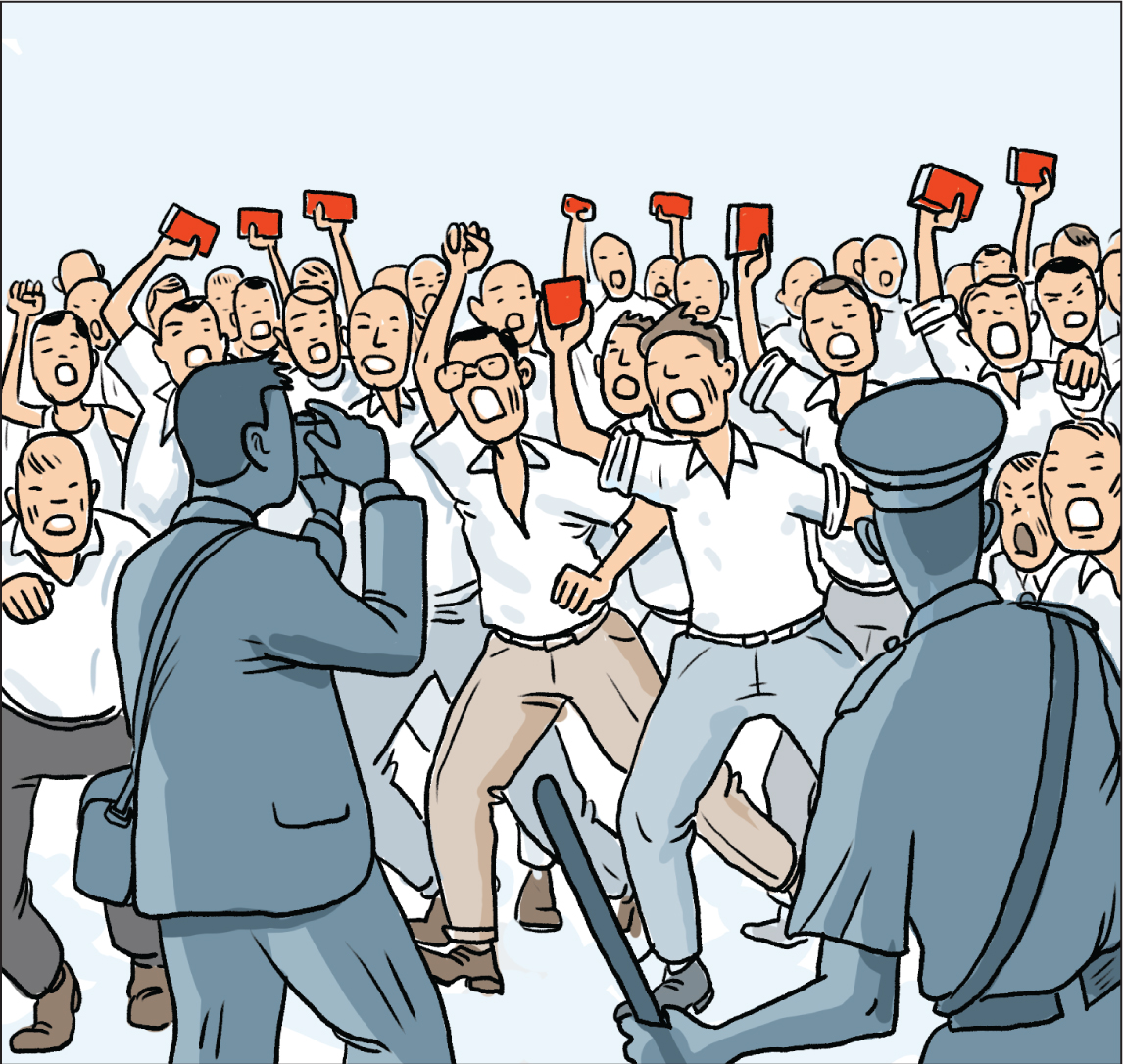
In the 1966 and 1967 riots,
Post reporters are often accused of being pro-British and
become targets of mobs supportive of the Cultural Revolution
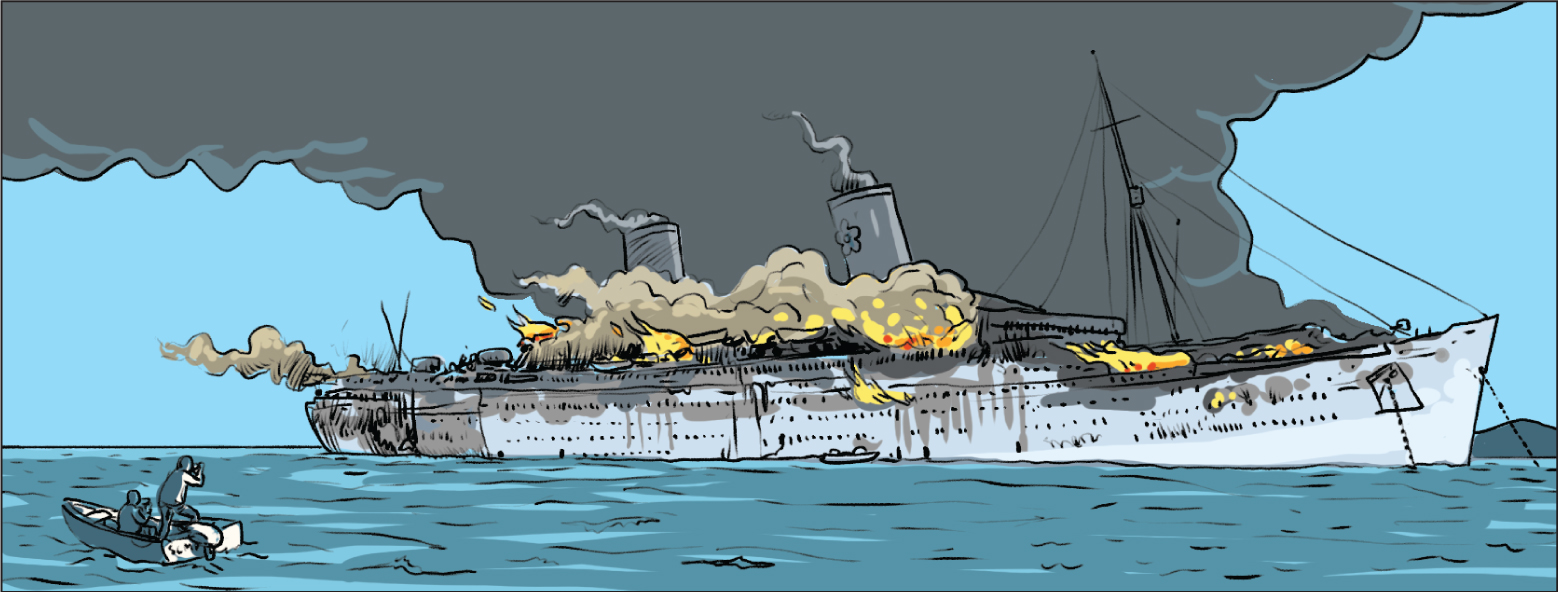
On January 9, 1972, a mystery blaze sweeps
through the Seawise University, formerly known as RMS Queen
Elizabeth, once the largest ocean liner in the world. Despite the
efforts of firefighters, the ship is destroyed and sinks in Hong
Kong's Victoria Harbour
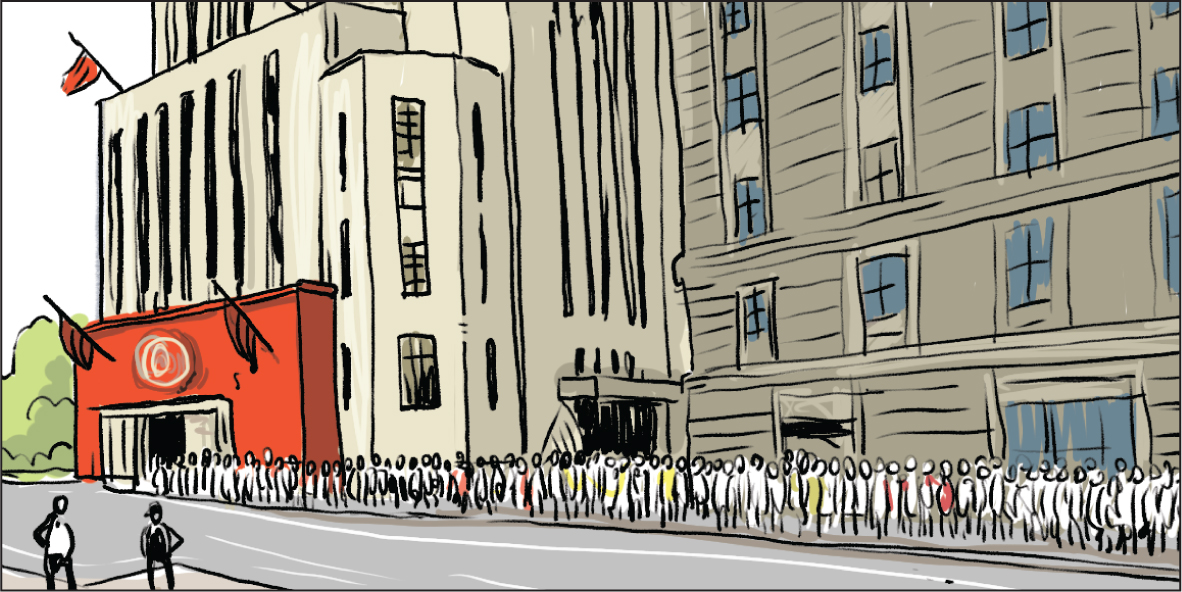
On September 9, 1976, Chairman Mao dies and
thousands queue at the Bank of China to sign a book of
condolences
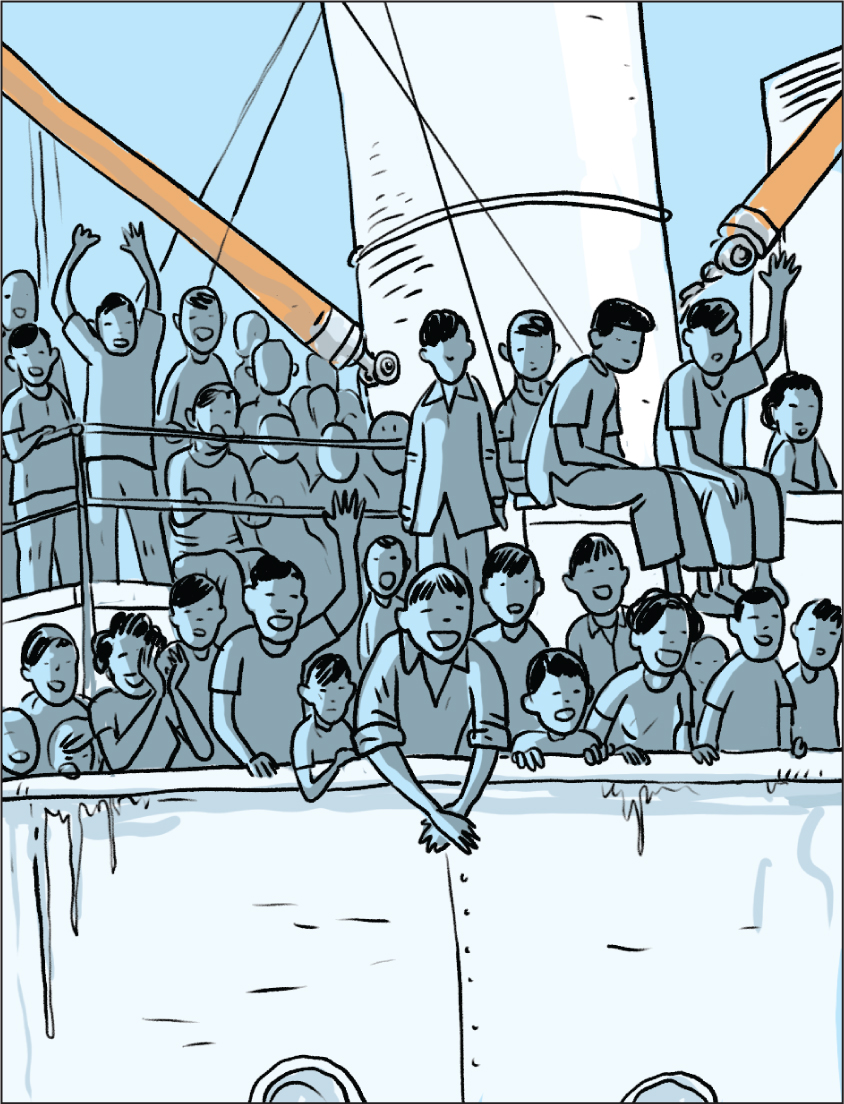
Hong Kong becomes a destination of first choice for tens of
thousands of people fleeing Vietnam after 20 years of war ended in
1975 with the fall of Saigon and a communist
victory over the US. The exodus continues after a brief and bloody
war between Vietnam and China in
February and March 1979, as Hanoi orders the
brutal expulsion of ethnic Chinese. Thousands of boat people die
in the South China Sea
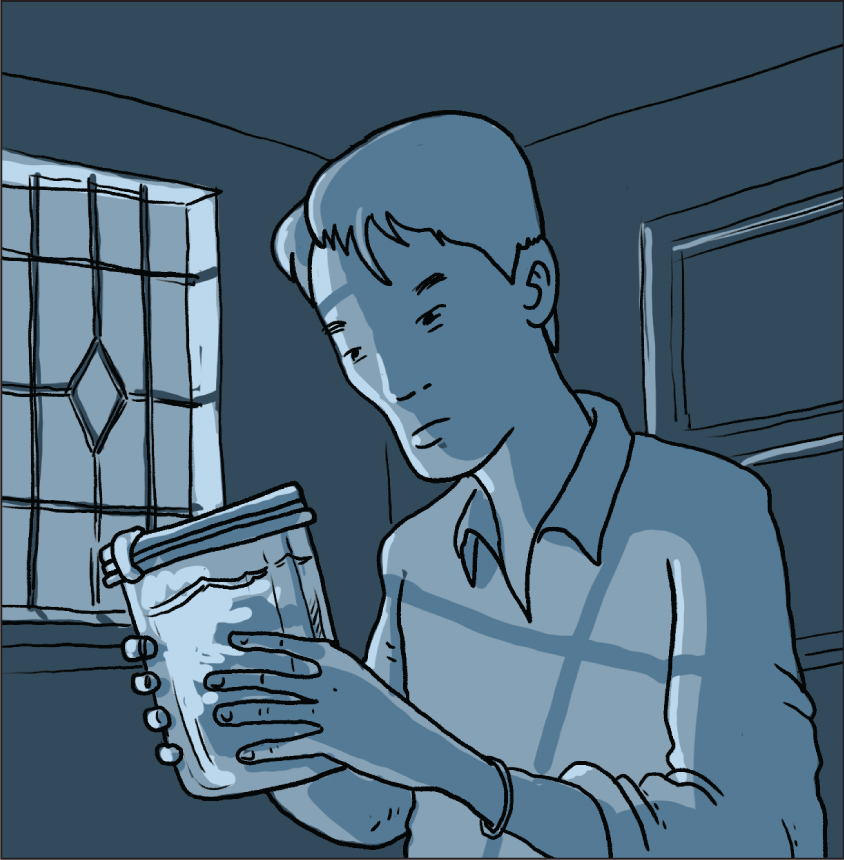
Hong Kong is horrified by one of the city’s most heinous crimes in
1982, when four women are killed by 28-year-old
taxi driver Lam Kor-wan. The Post reports shocking details
of the case: he photographs their bodies, dissects them and stores
sexual organs in jars of formaldehyde under his bed
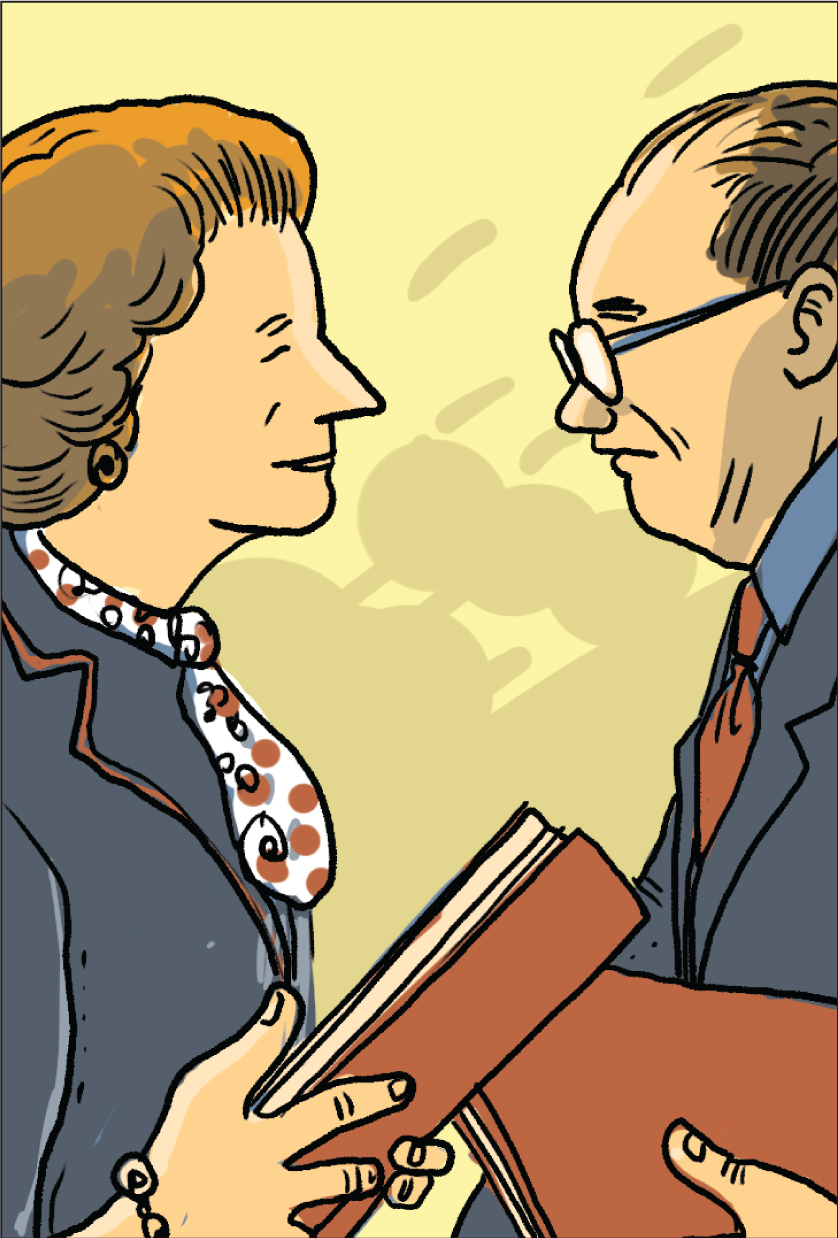
On December 19, 1984, Britain’s Prime Minister
Margaret Thatcher and Zhao Ziyang, the Chinese premier, sign an
agreement to return Hong Kong to China. Hong Kong is to be ruled
under a “one country, two systems” policy
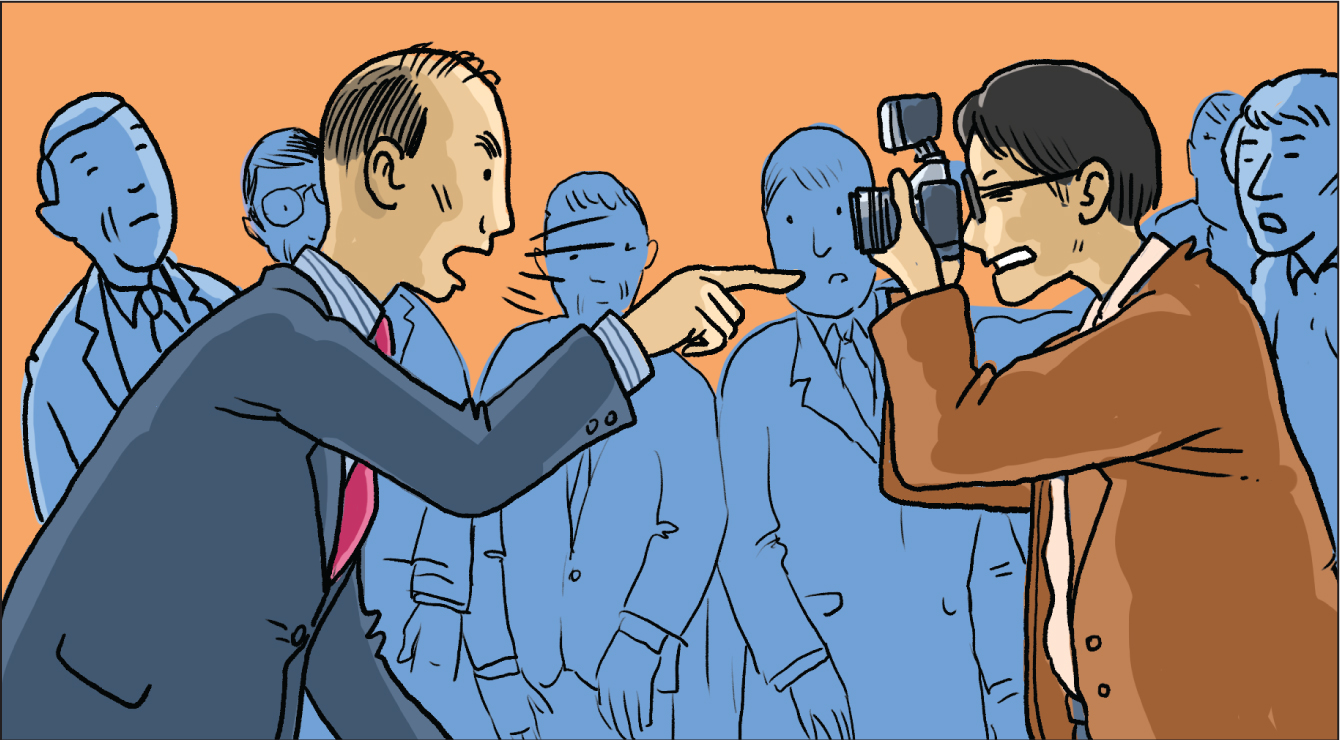
In October 1987, the stock exchange closes for
four days in an attempt to stop unprecedented losses during the
Black Monday global equities market crash. A
Post photographer is threatened by an enraged stock
exchange president when he takes a picture of him
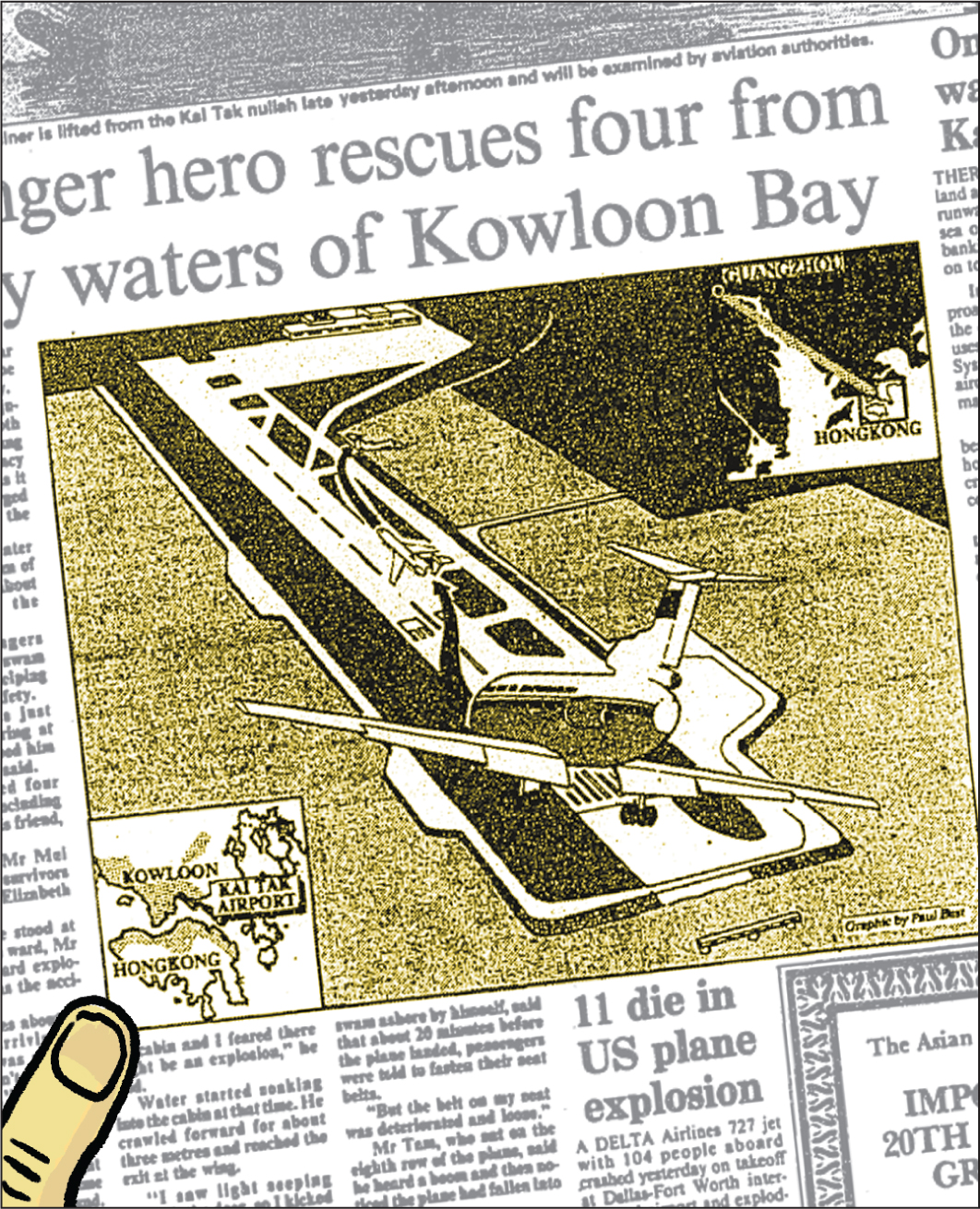
Seven people die when a passenger plane crashes at Kai Tak airport
in 1988. It is the first fatal accident at the
airport since 1967. The Post runs a large infographic on
the front page - drawn using cutting edge computer technology at
the time - to explain how it happened. Two years later the
governor announces a new airport development on Lantau Island
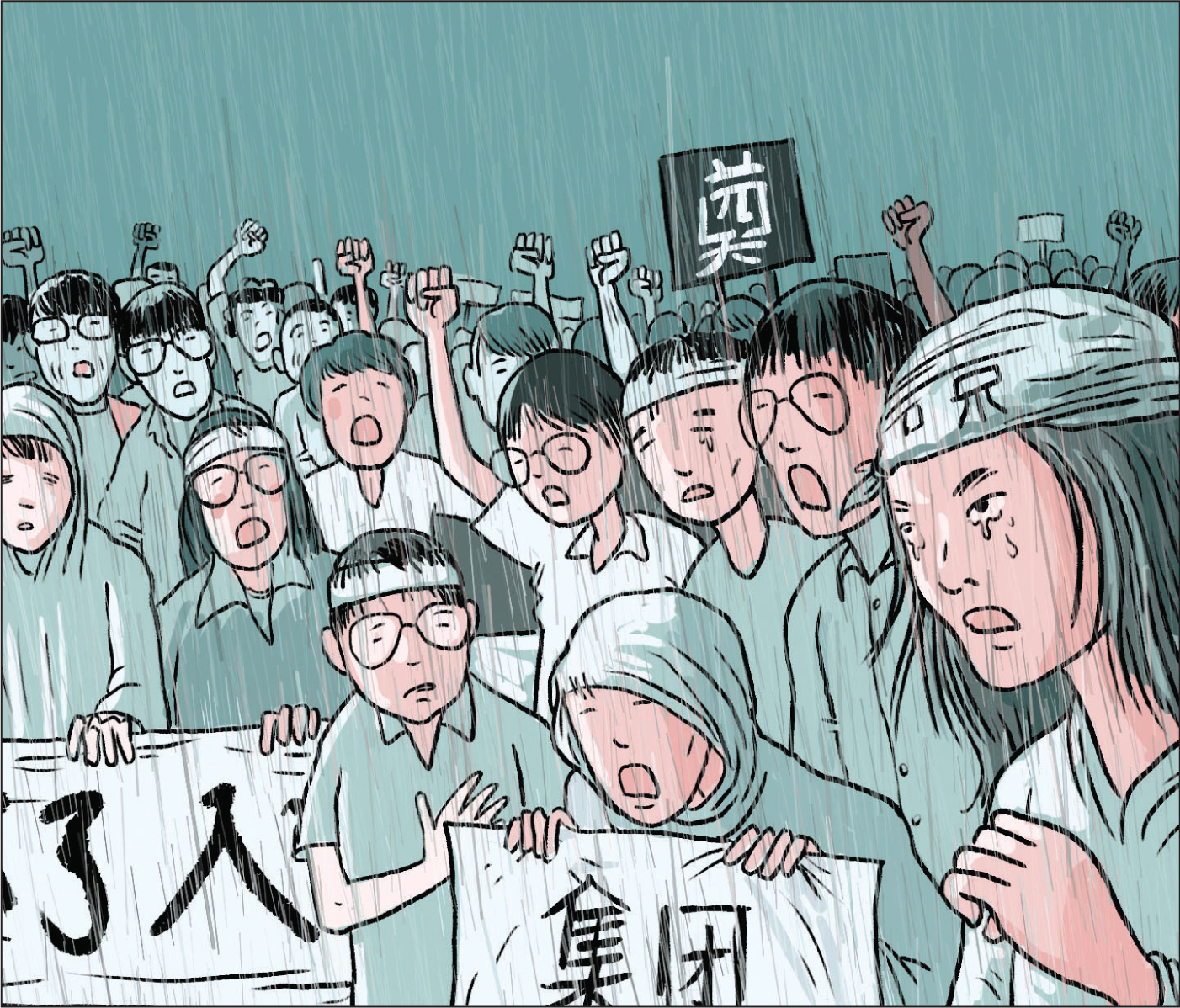
The Post dedicates many pages about the
June 4 Tiananmen Square crackdown
in 1989 and prints special editions as events
unfold. Over following days, hundreds of thousands of people
demonstrate on the streets of Hong Kong
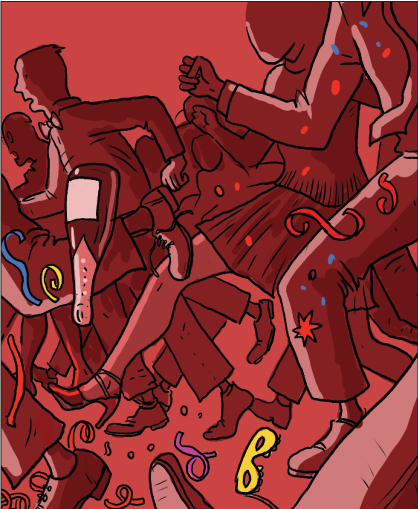
On January 1, 1993, Hong Kong awakes to tragedy:
“20 Dead In Crush Of New Year Revellers”, ran the front-page
headline of the Post. More than 100 are also injured in the
stampede involving some of the 20,000 in Lan Kwai Fong in Central.
The eventual death toll is later confirmed at 21
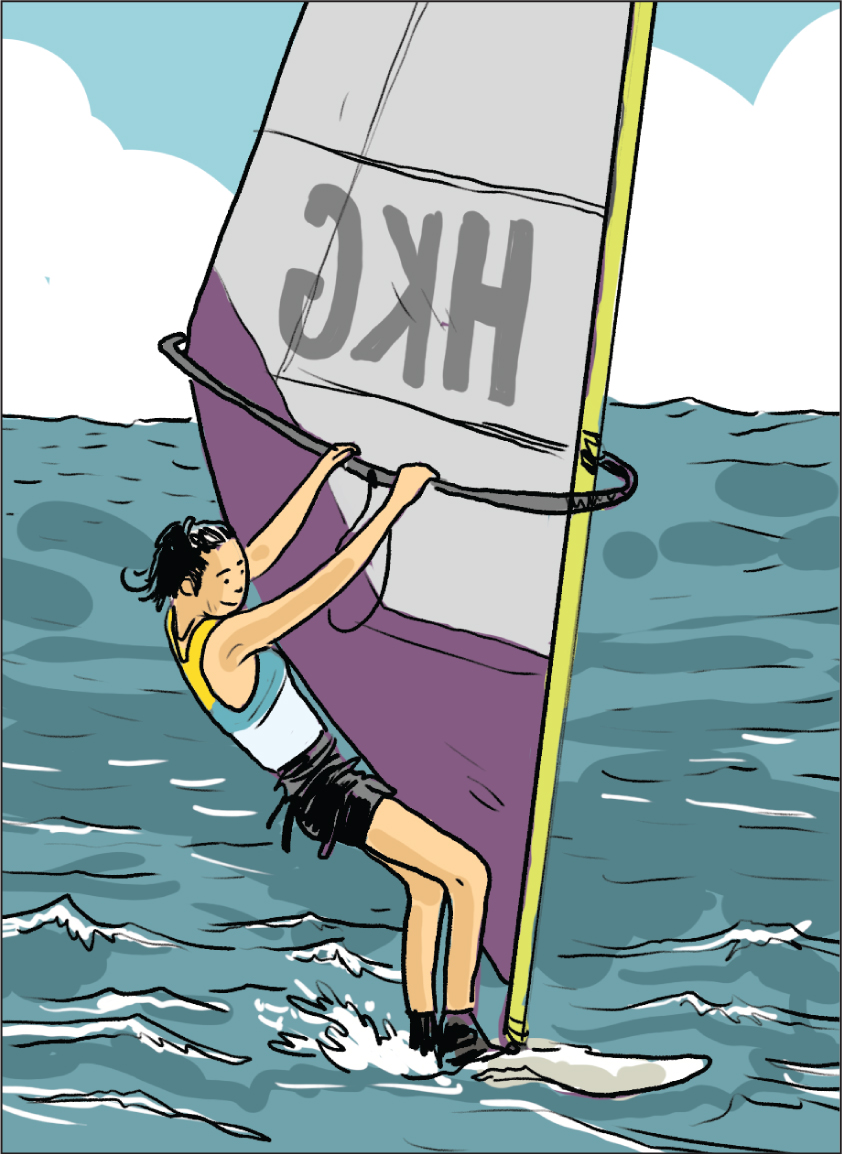
Windsurfer Lee Lai-shan, popularly known as San San, wins Hong
Kong’s first ever Olympic gold medal at the
1996 Atlanta Games, where she famously declares:
“Hong Kong athletes are not rubbish!”
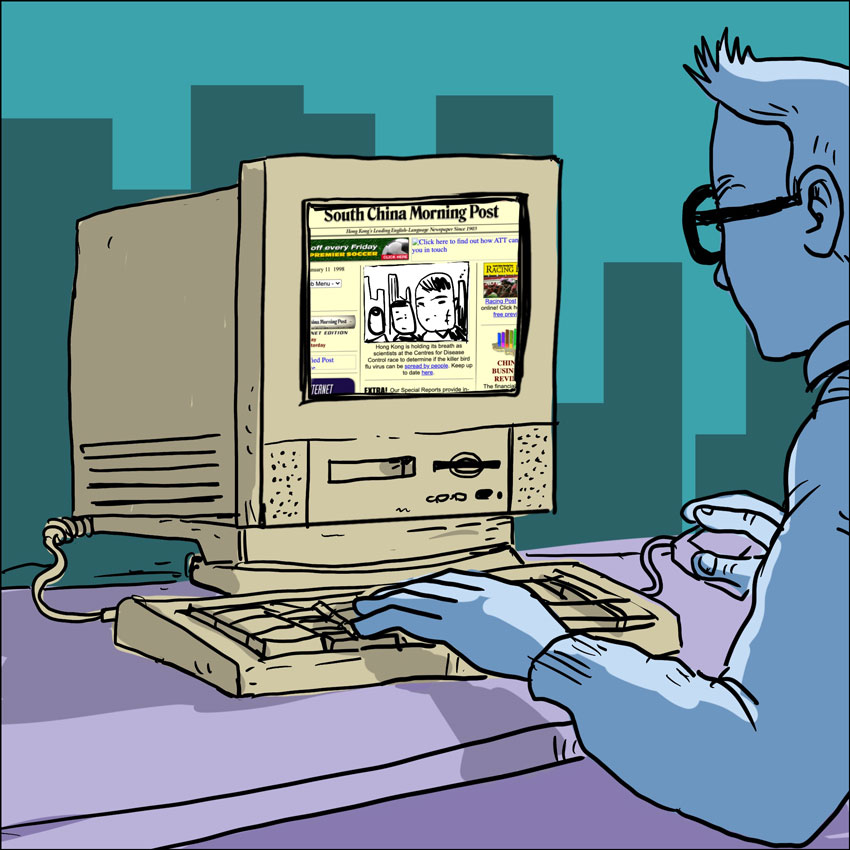
The Post goes digital as www.scmp.com launches on
December 2, 1996. Two years later, the website is
voted the best online newspaper outside the US at the E&P Best
Online Newspaper Awards, also called the EPpys

The world watches as Hong Kong returns to China on
July 1, 1997, after 156 years of British colonial
rule. The Post records what is believed to be a Hong Kong
record of over 7.9 million hits to its websites in one day. Almost
as soon as the handover celebrations end, the Asian financial
crisis grips the region
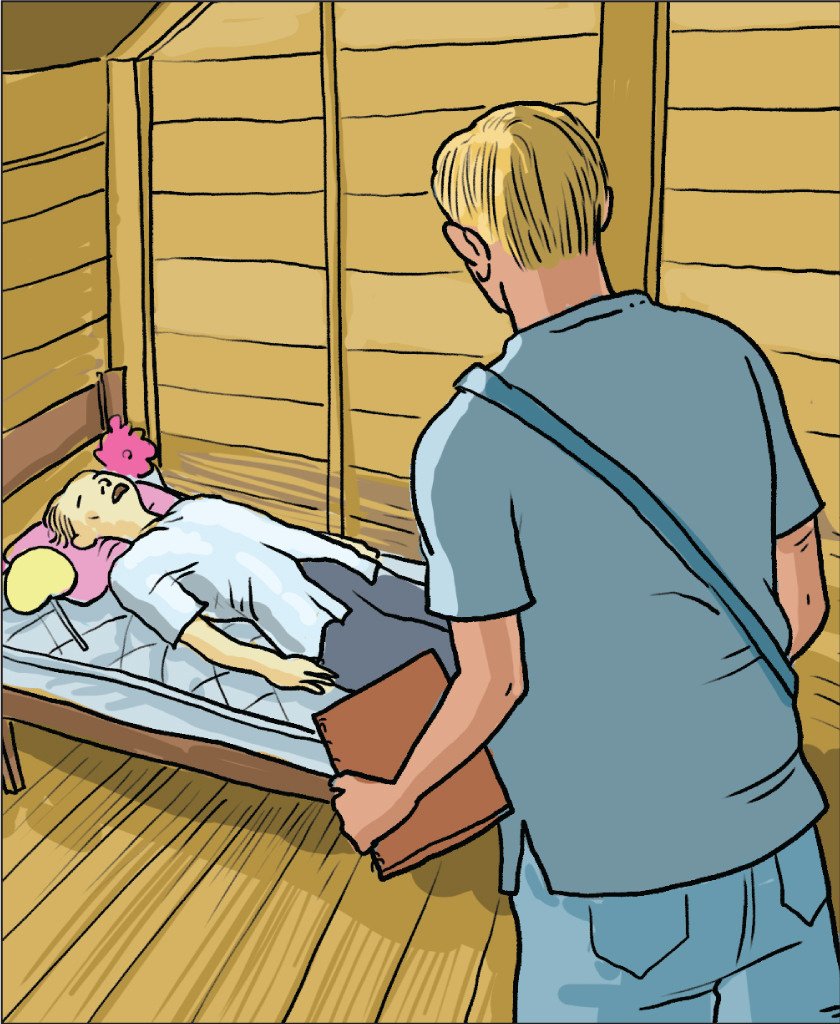
The Post’s Greg Torode is among the first foreign
journalists to see the body of Pol Pot, after the leader of the
genocidal Khmer Rouge regime dies on
April 15, 1998, in the jungle near the
Thai-Cambodian border

In 1998, the Post and RTHK jointly launch
Operation Santa Claus, one of the largest charitable donation drives in Hong Kong

In 2003, Sars – severe acute respiratory syndrome
– rips through the city, killing 299 of the 1,755 people it
infected. Among the fatalities are eight medical staff. The
Post launches a campaign to help protect medical workers
handling the outbreak in Hong Kong

On June 13, 2013, Post reporter Lana Lam
interviews
Edward Snowden. She is the only Hong Kong reporter to interview the US
whistle-blower during his time in the city
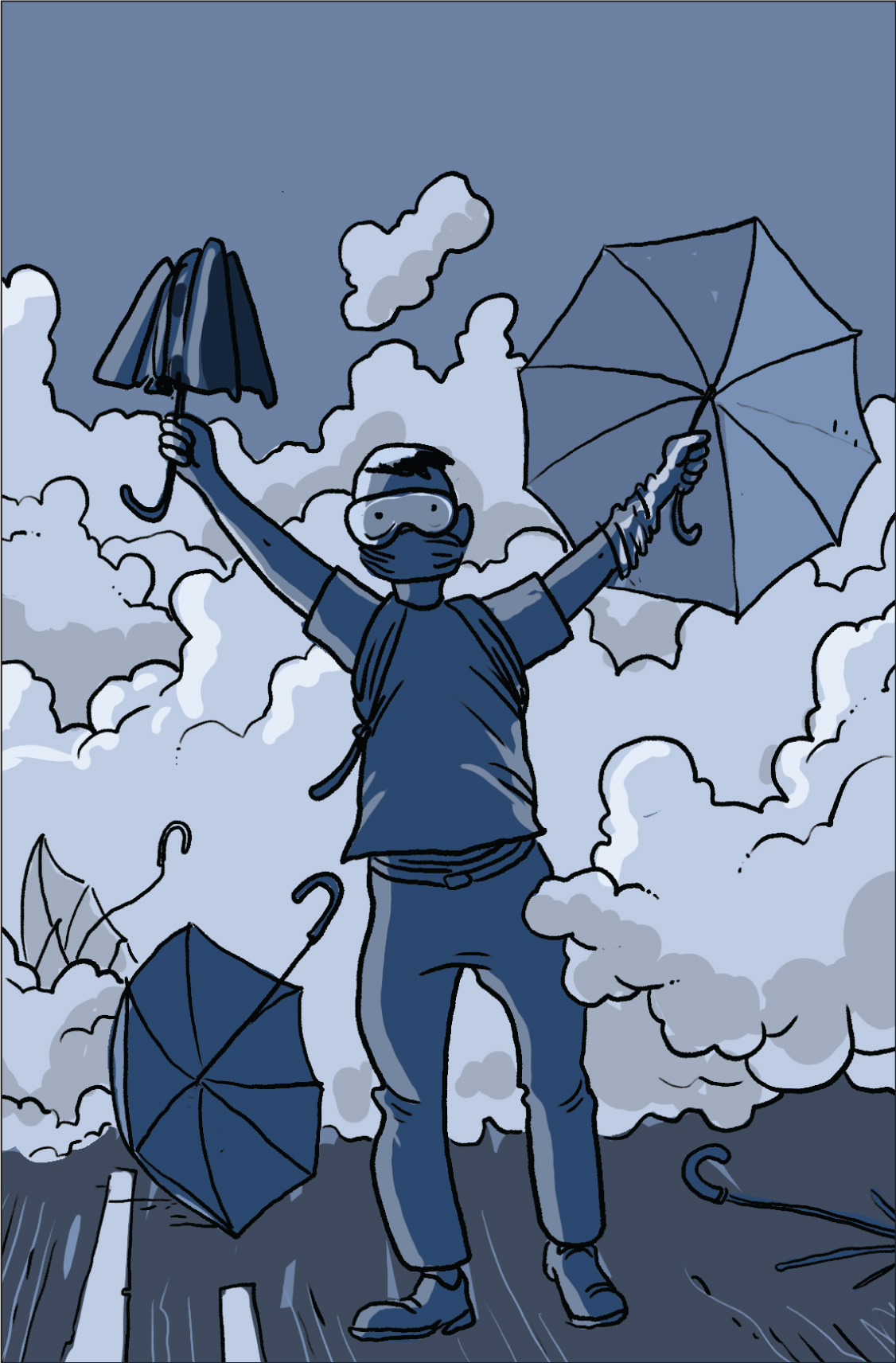
On September 18, 2014, the student-led
Occupy protests
paralyse Hong Kong for three months. It’s dubbed the “Umbrella
Revolution”
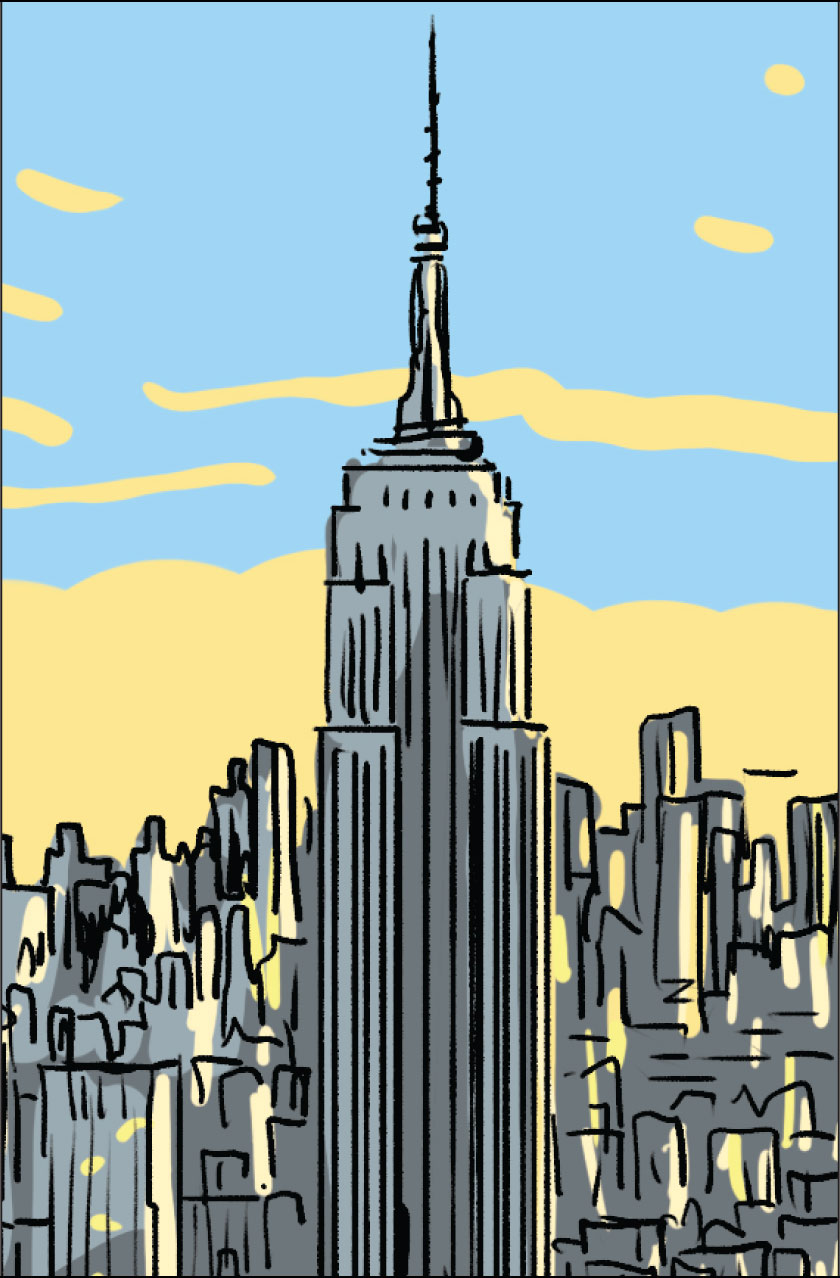
The Post opens its first permanent US bureau in
2017, a move that signals its commitment to
leading the global conversation about China
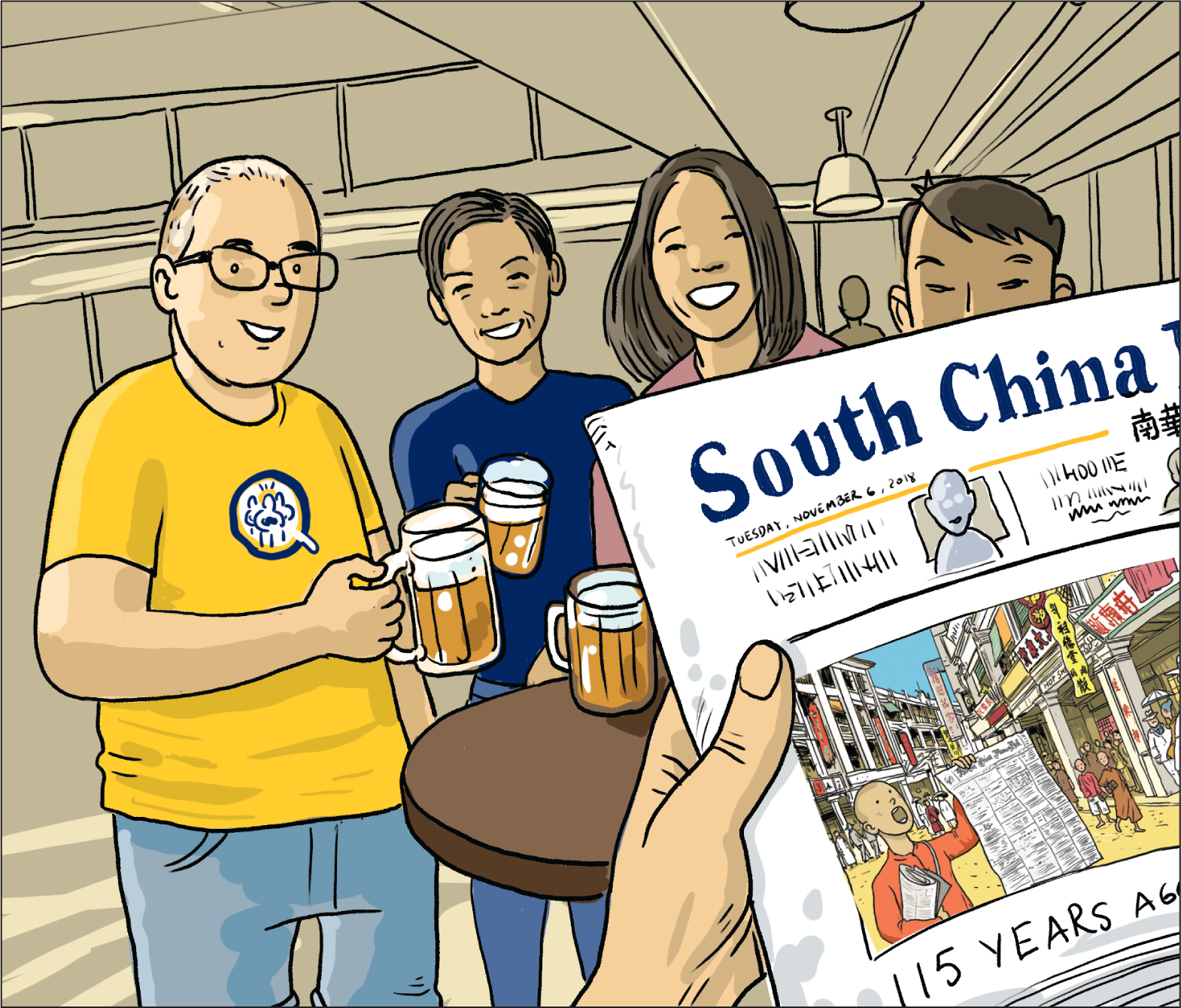
The Post’s headquarters move to Hong Kong’s Times Square in
2018 after Alibaba Group’s
acquisition
of the company from the Kuok family. The hi-tech offices are among
the best in the city and are fully equipped to facilitate the
Post’s ongoing transformation from a regional newspaper to
a global media company. It even has a pub
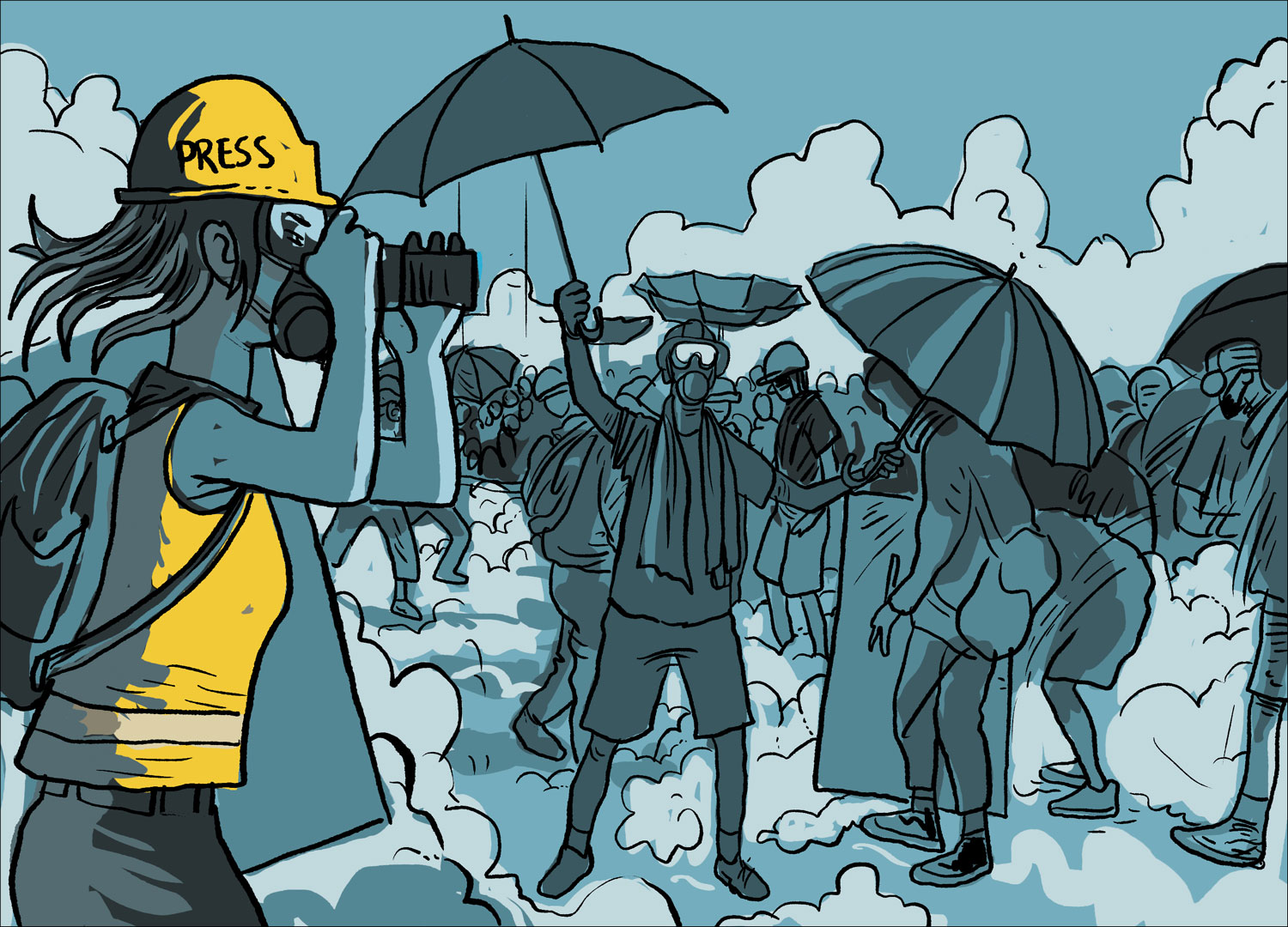
In 2019, Hong Kong is again in the throes of
anti-government protests, sparked by a since-withdrawn extradition bill, this time
bigger and more defiant than 2014. Frontline Post reporters and photographers wear masks
and protective gear as street clashes between police and
protesters turn increasingly violent over many months
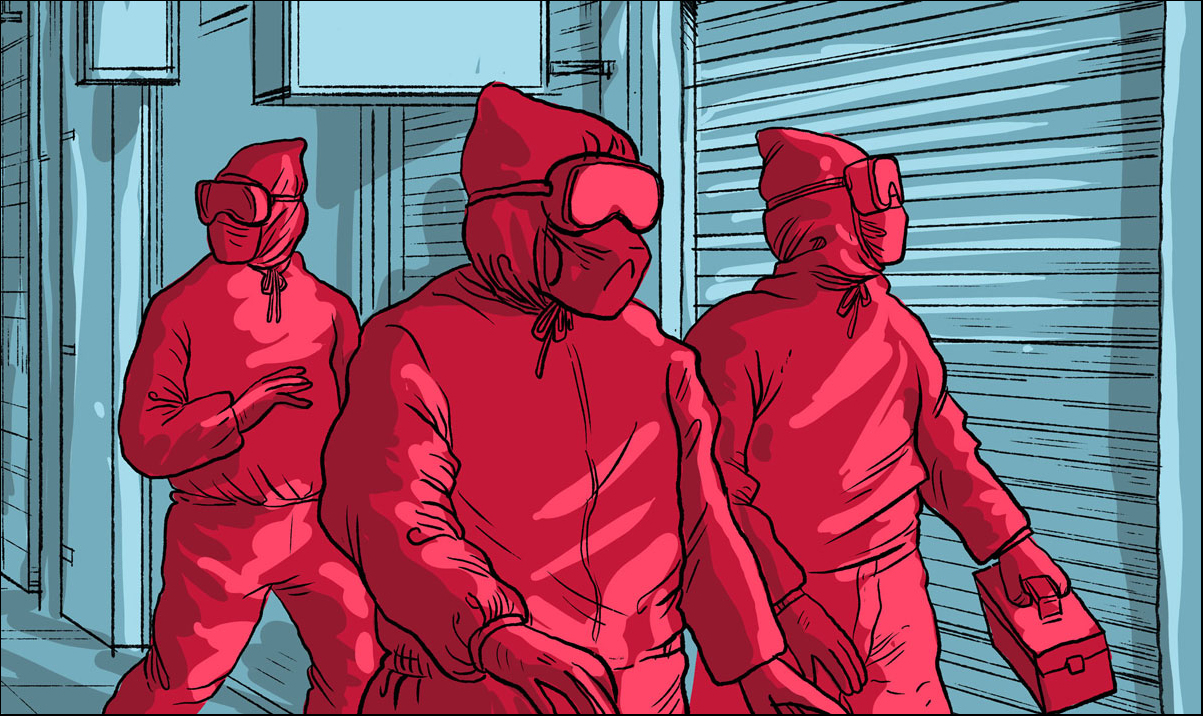
And just as 2020 begins, a new health crisis puts
the world to the test. The Post is among the first English
language media to report on a mystery viral illness in Wuhan,
China. Cases of the novel
coronavirus
soon emerge in other parts of the world. By March 11, the World
Health Organization declares the
Covid-19 outbreak
a global pandemic

In 2021, Post reporters in Tokyo and Hong
Kong provide live coverage as seven Hong Kong athletes deliver one
gold, two silver and three bronze medals at the
Tokyo Olympic Games, producing the city's best showing on the world's greatest
sporting stage. “Fencing god” Edgar
Cheung Ka-long, 24, wins the city’s first Olympic gold medal in a quarter
century. Other medals are won in swimming, table tennis, karate
and track cycling

As 2022 approaches, the Post becomes the
first news organisation in Asia to champion a new blockchain
standard where historical and archival items can be connected,
discovered and collected. The standard, called
ARTIFACTs, will use non-fungible token (NFT) technology to give anyone a
chance to own and trade historical moments accumulated by the
Post since 1903, in the forms of text, pictures, cartoons
and graphics
Edited by Andrew London
Creative Director Darren Long